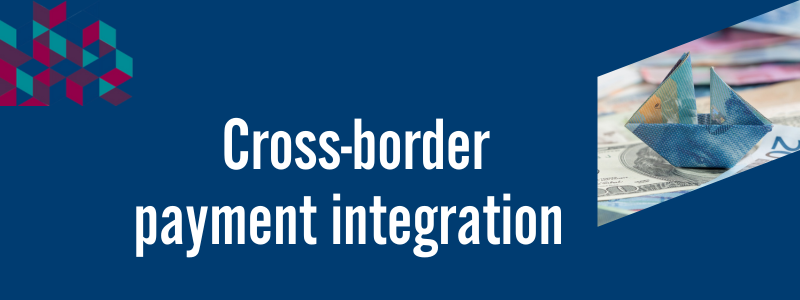

The world of the treasurer continues to evolve, providing more options for the business. Rather than treating changes in the payments landscape and the trade finance space separately, treasurers are uniquely placed to integrate these into a seamless activity that unlocks value to support:
New trade agreements offer companies the opportunity to expand into new markets. With this comes risk. However, current arrangements for managing trade are dependent on the use of paper – a process that hasn’t materially altered in centuries.
Trade digitisation has been moving at a very slow pace but this is about to change on the back of the UNCITRAL Model Law on Electronic Transferable Records (MLETR) – a uniform model law that was adopted by the United Nations Commission on International Trade Law in 2017. It allows the use of transferable documents and instruments such as bills of lading, warehouse receipts, bills of exchange and promissory notes in electronic form. A number of countries have already adopted this into local law and the UK joined this group in July 2023.
It will remove the need to courier documents and enable:
According to a report from the International Chamber of Commerce UK, it will lead to a 35% improvement in business efficiency and a 13% increase in international business for SMEs with 92% of respondents expecting digitisation to speed up trade finance processes.
The treasurer will be involved in some element of trade financing in most companies. It may be a light touch – just dealing with foreign currency, settlements or cash forecasting or they may be more heavily involved with selecting financial counterparties and supply chain finance. With the passage of the Electronic Trade Documentation Act 2023 by the UK parliament, treasurers in the UK should anticipate an impetus in the digitisation of trade instruments not only from their bank but other suppliers like ports, logistics providers and customs authorities.
Cross-border payment systems play a crucial role in the global economy. But many corporate treasurers are beginning to find their payment systems are stuck in the past – until recently, there hadn’t been any material change for a long period; systems had become embedded with manual, fixed and slow processes.
Changes in the payments landscape are happening today, driven by a cocktail of technological advances, evolving customer and supplier expectations, regulatory developments and the need for improved efficiency and transparency. Historical rigidity is being replaced with greater flexibility and efficiency as new payment methods are being rolled out.
The greater range of payment choices mean that treasurers in the future will have a greater level of choice for settlement, depending on factors such as value and urgency. There will be more optionality, with settlements made in different ways, across different payment rails. For instance, the wider use of currency accounts (both physical and virtual) will allow corporates the option of pricing and settling their trades in their base currency or indeed the currency of the payer. This in turn will give treasurers the opportunity to negotiate better exchange rates with their banks and payment processors. It can also open up a cost-benefit analysis of regional payment processing hubs.
These choices may affect cashflows and working capital and coupled with the treasurer’s responsibility for ensuring efficient, secure payment processes, it is essential they understand key aspects when reviewing their systems. Do they integrate seamlessly with other corporate systems, such as their TMS or ERP system? Are they providing valuable insights, do they deliver clear visibility over cross-border transactions, are they secure, but do they also offer the flexibility demanded by trade partners around the world? And will they be fit for purpose tomorrow and have the flexibility and adaptability to keep pace with changes?
For the treasurer, by reviewing systems, understanding new payment environments and asking key questions of their service providers, they can put their organisation in a position where suppliers and customers actively prefer to do business with them – demonstrating the commercial value that treasurers can deliver to their company.
Developments in both trade and payments mean increased transparency and visibility for corporate treasurers. Managing trade and cross-border payments effectively is vital to a business, so exploring alternative payment options that can offer competitive fees, exchange rates and even the opportunity to negotiate price based on settlement currency is incredibly important. Analysing payment data can also support negotiations with payment providers to provide more efficient and lower costs services. This can be dynamically reviewed to ensure charges and rules reflect the current needs of the business.
Commercially driven treasurers will give their companies greater confidence to scale their international activities. Reduced friction, greater transparency and faster payments will remove barriers to such operations, which can often leave them in limbo between delivering goods and services and receiving payments. The same will naturally apply to paying suppliers, improving their resilience and creating the ability to offer better terms.
It makes business sense to continually think about trade and payments solutions together and understand the advantages they can bring to a successful company.

Barclays Bank PLC is registered in England (Company No. 1026167) with its registered office at 1 Churchill Place, London E14 5HP. Barclays Bank PLC is authorised by the Prudential Regulation Authority, and regulated by the Financial Conduct Authority (Financial Services Register No. 122702) and the Prudential Regulation Authority. Barclays is a trading name and trade mark of Barclays PLC and its subsidiaries. Find out about the Financial Services Register.
